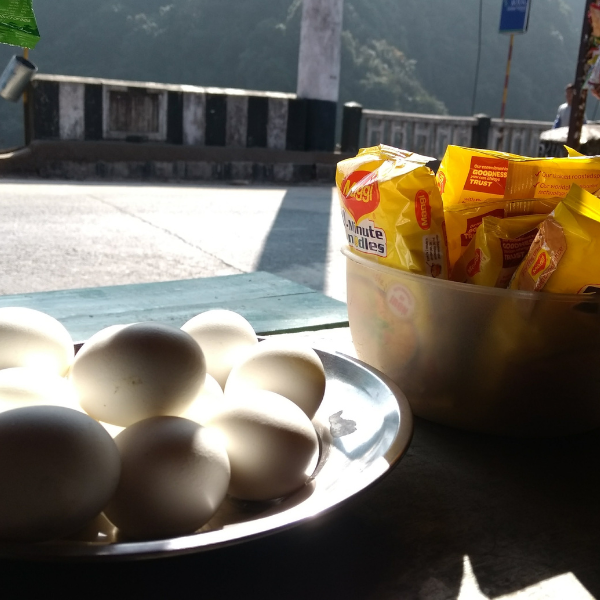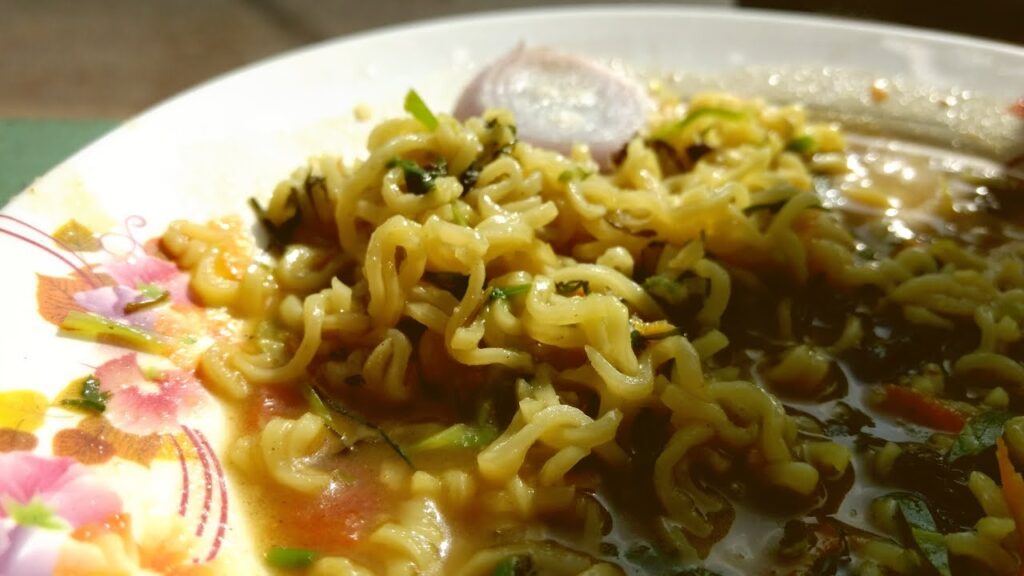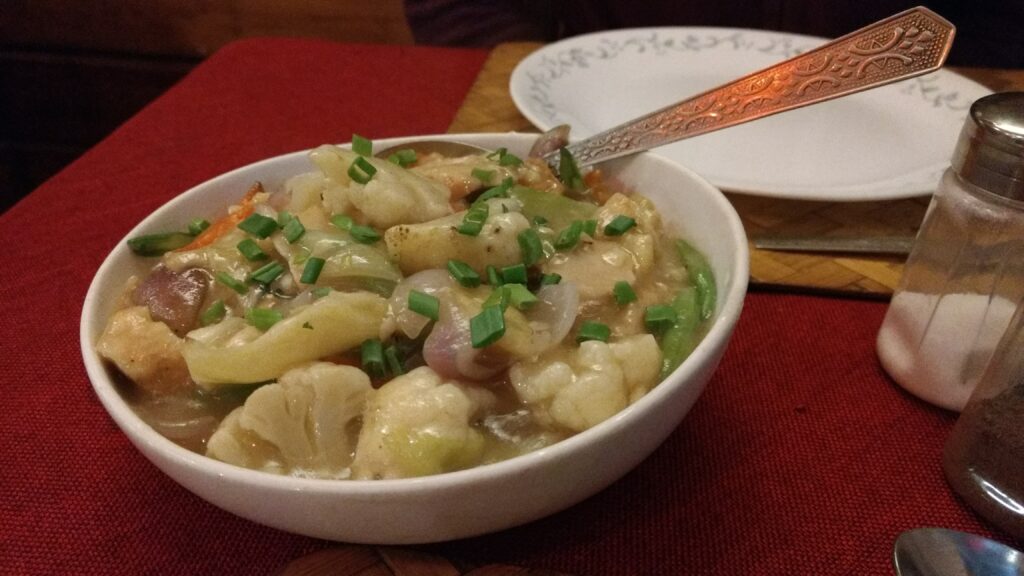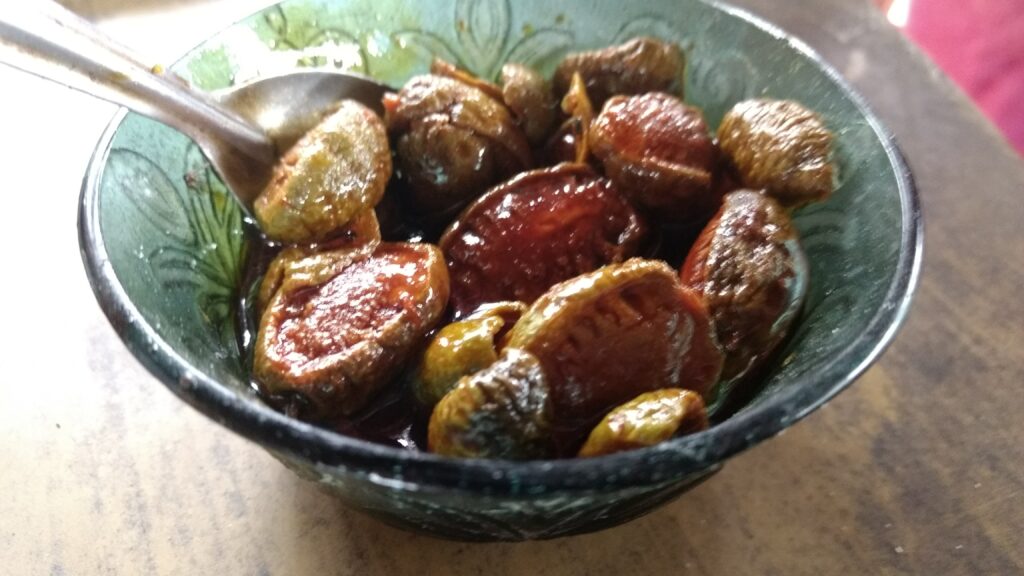Traveling through the Northeast of India is an experience that stays with you forever—its breathtaking landscapes, diverse cultures, and warm people make it an adventure of a lifetime. But one crucial part of this journey is food. If you’re planning to explore this part of India, here’s an important survival guide: you must at least like eggs and Maggie. If you do, you’re good to go. If not, well, brace yourself for some real adjustments.
Food in the Northeast is vastly different from what most of us are used to in other parts of India. You won’t always find the fancy meals you’re accustomed to, and if you’re lucky, you might stumble upon samosas or even puri bhaji. But largely, you must be prepared to embrace a diet of rice, endless varieties of sabjis, and the ever-reliable duo—eggs and Maggie.

When eggs and Maggie become your best friends
I’ve always been someone who appreciates simple food, but this trip pushed my boundaries. In the remote regions, where options were limited, eggs and Maggi became my primary source of sustenance. Breakfast, lunch, and dinner—I knew I could count on these two, whether I liked it or not.
At first, it wasn’t too bad. Who doesn’t love a warm bowl of Maggie on a chilly morning or a plate of scrambled eggs when nothing else is available? But then came the variations—Maggie in soups, Maggie in curries, Maggie in different shapes and sizes. It felt like every place had its own unique way of reinventing the humble Maggie, and I got to taste them all. Some were delightful, while others were, let’s just say, quite the experiment. By the end of the trip, I was so over Maggie that I couldn’t bring myself to eat it for another six months!

Eggs, on the other hand, were my true savior. Boiled, scrambled, or made into an omelet—there was always a way to make a meal out of them. They were a reliable source of protein, and when paired with rice and simple vegetable curries, they kept me going.
Adjusting to a new palate
One of the biggest challenges I faced was the heavy use of mustard oil in the local cuisine. For those who enjoy it, the food is rich, flavorful, and aromatic. But for me, it was tough. My stomach didn’t take well to mustard oil, making digestion a real struggle. Every meal felt like a challenge as I tried to navigate through the dishes, picking the ones that were milder and less oily. And as I was traveling on budget, I couldn’t take the luxury of fancy meals at restaurants. Still one fine day, I just thought, ‘forget it,’ I am going for a hot dinner! I stepped into a “supposed to be fancy” restaurant and ordered something that looked like this—another disappointment!

This experience taught me a valuable lesson—food, no matter how delicious, is deeply personal. What might be a delicacy for someone can be a discomfort for another. We all have our comfort foods—the ones that feel like home. But travel has a way of turning your comfort food into discomfort food. I never thought I could grow tired of Maggie, but after this trip, I realized how much I had taken my usual meals for granted.
Beyond Maggie and eggs: The Northeast’s unique flavors
While my diet primarily revolved around eggs and Maggie, I did get to experience some of the unique flavors of the Northeast. The variety of rice and sabjis was impressive, with each region offering its own take on these staples. The simplicity of a well-cooked dal with steaming hot rice was a relief on days when my stomach craved something familiar.

I also came across some amazing local snacks. Piping hot samosas on a cold evening felt like a luxury, and on rare occasions, I managed to find puri bhaji, which felt like a comforting hug from home. The street food culture in some towns was a delight, offering momos, thukpa, and various fried snacks that added a much-needed break from my egg-and-Maggie routine.
The lessons that stay with you
This journey wasn’t just about food—it was about adaptation, patience, and appreciating what we have. It’s easy to take our everyday meals for granted until we are in a situation where our choices are limited. Surviving on eggs and Maggie wasn’t just about filling my stomach; it was about understanding how food plays a crucial role in our travel experiences.
I learned to value the meals I eat in my own comfort zone—the simple roti-sabji, the familiar dal-chawal, the homemade parathas that I once considered ordinary. Travel has a way of making you appreciate the little things, and for me, it was the realization that sometimes the food we miss the most is the one we never thought twice about before.
So, if you ever find yourself in the Northeast of India, prepare for an adventure—not just in terms of landscapes and culture, but in food as well. And remember, as long as you like eggs and Maggie, you’ll survive. But be warned—you might just return home with a whole new perspective on the food you once took for granted.
Love,
Shweta